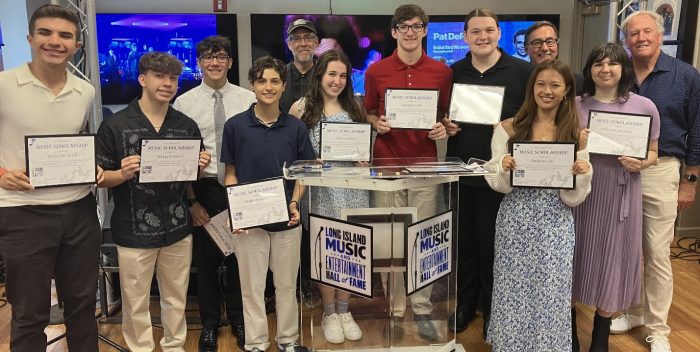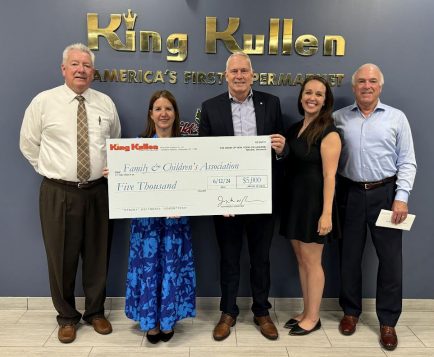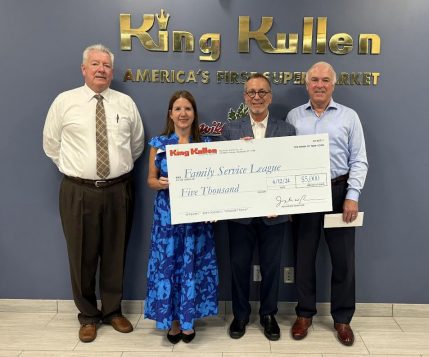Ongoing
Huntington Summer Arts Festival
The 59th annual Huntington Summer Arts Festival returns to Heckscher Park, 2 Prime Ave., Huntington from June 21 to Aug. 24, Wednesdays to Saturdays at 8 p.m., and Sundays at 7 p.m. The 10-week festival will feature over 40 live performances including dance, theater and music. Bring seating. Held rain or shine. Free. For a list of scheduled performers, visit www.huntingtonarts.org. 631-271-8423
Thursday July 4
Fourth of July Parade
Grab yourself a lawn chair and head down to Port Jefferson’s Main Street so you don’t miss a moment of the Village’s Fourth of July Parade at 10 a.m. Fire trucks, dancers, bagpipe players, classic cars and more. The event is sponsored by Port Jefferson Fire
Department. 631-473-1414
Celebration of Hometown Heroes
VFW Post 6249, 109 King Road, Rocky Point and the Rocky Point Sound Beach Chamber of Commerce present A Celebration of Hometown Heroes at 11 a.m. Followed by a live reading of the Declaration of Independence. Refreshments will be served. 631-729-0699, www.rpsbchamber.org
Fireworks at Bald Hill
Celebrate Independence Day at the Long Island Catholic Health Amphitheater at Bald Hill, 1 Ski Run Lane, Farmingville with a high-energy tribute to female artists with an appearance by Meghan VK and School of Rock starting at 5:30 p.m. followed by fireworks by Grucci at 9:15 p.m. Free. 631-676-7500
Community Band Concert
The Northport Community Band will host concerts at the Robert W. Krueger Bandshell in Northport Village Park tonight, July 11, July 18, July 25 and Aug. 1 starting at 8:30 p.m. Free. Bring seating. Rain location is Northport High School. www.ncb59.org
Friday July 5
Musical Moments
Musical Moments return to Russ Savatt Park, 14 Main St., Kings Park from 7:30 to 9 p.m. with B4Dawn, courtesy of the Kings Park Civic Association. Bring seating. Weather permitting. 516-509-7231
Long Island Comedy Festival
Join Theatre Three, 412 Main St., Port Jefferson for an evening of comedy at 8 p.m. Line-up includes Steve Rocco, Tom McGuire, Tugboat Manny and Steve Lazarus. Tickets are $65. To order, call 631-928-9100 or visit www.theatrethree.com.
Saturday July 6
Lavender Festival
Hoshyla Farms, 132 Ryerson Ave., Manorville will hold a Lavendar Festival today and July 7 from 11 a.m. to 6 p.m. Walk through rows of blooming lavender and pick your own, enjoy live music, vendor market, children’s activities, food and wine. Admission is free, with parking available on-site for $10 per car. www.hoshylafarms.com
All Souls Concert
Join All Souls Church, 61 Main St., Stony Brook for a special concert titled Conversations on the Sacred at 6 p.m. The evening will combine poetry, music, and Native American Drumming in one unique performance for the community. Free. Call 631-655-7798 for more information.
John Denver Tribute Concert
Back by popular demand, Ted Vigil returns to Theatre Three, 412 Main St., Port Jefferson at 8 p.m. for a John Denver tribute concert featuring the late singer’s greatest hits. Accompanied on guitar and vocals by Roberta Fabiano. Tickets are $65. To order, call 631-928-9100 or visit www.theatrethree.com.
Sunday July 7
Lavender Festival
See July 6 listing.
Caumsett Stroll
Caumsett State Historic Park Preserve, 25 Lloyd Harbor Road, Huntington hosts am Early Summer Seasonal Stroll from 9:45 a.m. to 11:45 a.m. The short 1.5 mile walk will focus on summer’s wildflowers. Dress for the possibility of long grass. $4 per person. Adults only. Advance reservations required by calling 631-423- 1770.
Celebrate St. James Concert Series
Celebrate St. James continues its summer concert series at Celebrate Park, 369 Lake Ave., St. James with Bobby Nathan Band’s Rockin’ Dance Party from 6 p.m. to 9 p.m. The series continues every Sunday through Aug. 18. Free. Bring seating. 631-984-0201, www.celebratestjames.org
Village Green Summer Concert
Summer concerts return to the Stony Brook Village Center every Sunday at 7 p.m. in front of the Stony Brook Post Office, 111 Main Street, Stony Brook through Aug. 18. Tonight’s performance will feature the Just Sixties Band. Bring seating. In the case of rain, the concerts will be cancelled. 631-751-2244, www.wmho.org
Monday July 8
Monday on Main
The Kings Park Chamber of Commerce presents Monday on Main on Main Street in Kings Park from 6 to 9 p.m. Enjoy an antique car show, Art in the Park, live musical performances, rides and games for the kids. 631-269-7678, www.kingsparkli.com
Northport Fireman’s Fair
The Northport Volunteer Fire Department 98th annual Fireman’s Fair kicks off tonight and runs through July 13 from 7 to 11 p.m. at the fire department grounds on Steers Ave, off of Ocean Ave in Northport. The six day event will feature carnival rides by Blue Sky Amusements, festival food, carnival games and more. 631-261-7504
Sound Beach Civic Meeting
Sound Beach Firehouse, 152 Sound Beach Blvd., Sound Beach hosts a Sound Beach Civic Association meeting at 7:30 p.m. On the agenda is the Civic Board election. All are welcome. For more information, call 631-744-6952.
Tuesday July 9
Northport Fireman’s Fair
See July 8 listing.
Honey Bees Lecture
Frank Melville Memorial Park, 1 Old Field Road, Setauket continues its free summer programs with Buzzing Insights: A Journey into the World of Honey Bees with Matt Kenyon at 11 a.m. Learn about bees and beekeeping and visit the park’s hives. Meet at Hap’s Red Barn. 631-689-6146
NSJC Social Club event
North Shore Jewish Center Social Club, 385 Old Town Road, Port Jefferson Station invites the community to a presentation on wills, trusts, and estates by Gabrielle Burner, Esq., courtesy of M&T Bank in the Social Hall at 11 a.m. Bagels, cream cheese and coffee will be served. $5 per person, $4 members. 631-928-3737
Summer SWAP Concert
The Jazz Loft, 275 Christian Ave., Stony Brook will host a series of “Summer Stage With a Purpose” (Summer SWAP) concerts on its front lawn from 6 to 8 p.m. beginning tonight with the Arta Jekabsone Quartet. Guests may purchase refreshments in the Basie Garden beside the venue. Free. 631-751-1895, www.thejazzloft.org
Summer Concert in the Courtyard
Northport Public Library, 151 Laurel Ave., Northport continues its Summer Concerts in the Library Courtyard series with Dave Clive’s Nawlins Funk Band at 7 p.m. Experience the best of New Orleans party music from the 1950s to the sounds of today, featuring traditional rhythms combined with modern blues, jazz, and funk. Rain date is July 10. No registration required. 631-261-6930
Concerts at The Gazebo
Enjoy Tuesday night concerts at The Gazebo, 127 Smithtown Blvd., Nesconset through Aug. 27 kicking off with That 70s Band tonight at 7 p.m. Rain dates are the next day. 631-672-5197, www.nesconsetchamber.org
Smithtown Community Band
The Smithtown Historical Society hosts the 38th annual Smithtown Community Band concert series, Starry Nights, on the grounds of the Frank Brush Barn, 211 E. Main St., Smithtown tonight, July 16, July 23 and July 30. Concerts begin at 7:30 p.m. Free. Bring seating. 631-265-6768
Wednesday July 10
Northport Fireman’s Fair
See July 8 listing.
Cruise Night Car Show
The Shoppes at East Wind, 5720 Route 25A, Wading River hosts a Cruise Night Car Show every Wednesday through October from 5 to 9 p.m. Visit the Shoppes, enjoy a bite to eat and then check out the fine array of classic cars in the parking lot. 631-929-3500
Port Jefferson Sunset Concert
Port Jefferson Arts Council continues its Sunset Concerts at Harborfront Park, 101-A East Broadway, Port Jefferson with a performance by the The Levins from 6:30 to 8 p.m. Free. Bring seating. Held rain or shine. 631-473-5220, www.gpjac.org
Music Under the Stars
Middle Country Public Library, 101 Eastwood Blvd., Centereach kicks off its Music Under the Stars concert series in its parking lot featuring Guilty Pleasures (80s music) at 7 p.m. Bring seating. 631-585-9393
Summer Concert Wednesdays
Port Jefferson Station-Terryville Chamber of Commerce continues its Summer Concert Wednesdays at the Train Car Park, 1 Rose Ave. (corner of Route 112 and Nesconset Highway), Port Jefferson Station with a performance by Easy Street from 7 to 9 p.m. The free series continues every Wednesday through July 31. Bring seating. 631-821-1313, www.pjstchamber.com
Thursday July 11
Community Band Concert
See July 4 listing.
Northport Fireman’s Fair
See July 8 listing.
Family Fun Night at Hoyt Farm
Hoyt Farm Nature Preserve, 200 New Highway, Commack will host a Family Fun Night from 5 to 9 p.m. with dinner, a concert by Where Stars Collide, raffles and kids activities. Admission is $20 adults, $10 children, $30 per family. Proceeds will go toward maintaining 911 Responders Remembered Park in Nesconset. For tickets, call 631-979-8069.
Dennis Cannataro Concert Series
The Dennis Cannataro Family Summer Concert Series returns to the Smithtown Library, 1 North Country Road, Smithtown beginning with The Gold Coast Orchestra (Motown) tonight at 7:30 p.m. No registration required. 631-360-2480 ext. 150
Harborside Concerts
Harborside concerts kick off at the Show Mobile at Harborfront Park, 101-A East Broadway, Port Jefferson tonight at 7 p.m. with Southbound. Bring seating. 631-473-4724, www.portjeff.com
Theater
‘Romeo and Juliet’
Suffolk County Vanderbilt Museum, 180 Little Neck Road, Centerport continues its 35th annual Shakespeare in the Courtyard Festival with Romeo and Juliet from June 7 to July 5. Shakespeare’s timeless tragedy of star crossed lovers follows two families locked in an ancient rivalry. When two children from opposing sides fall in love, they challenge the imposed norms of the time and set both families on a path to ruin. Presented by the Carriage House Players, the show will take place in the mansion’s courtyard on Wednesdays and Fridays at 8 p.m. and Sundays at 7 p.m. Tickets are $20 adults, $15 seniors and children. To order, visit www.vanderbiltmuseum.org.
‘Newsies’
Stop the presses! This Disney film turned Tony-winning Broadway hit Newsies heads to the Smithtown Performing Arts Center, 2 E. Main St., Smithtown from July 13 to Aug. 18. Set in turn-of-the century New York City, Newsies is the rousing tale of Jack Kelly, a charismatic newsboy and leader of a band of teenaged “newsies.” When titans of publishing raise distribution prices at the newsboys’ expense, Jack rallies newsies from across the city to strike against the unfair conditions and fight for what’s right! Tickets are $35 adults, $32 seniors, $25 students. To order, visit www.smithtownpac.org.
‘Boeing Boeing’
The Minstrel Players, Houghton Hall, Trinity Episcopal Church, 130 Main St., Northport presents Boeing Boeing by Marc Camoletti on July 20 and 27 at 8 p.m. and July 21 and 28 at 3 p.m. Set in the 1960s, the play centers on bachelor Bernard, who has a flat in Paris and three airline stewardesses all engaged to him without knowing about each other. Bernard’s life gets bumpy, though, when his friend Robert comes to stay, and complications such as weather and a new, speedier Boeing jet disrupt his careful planning. Tickets $20 adults, $15 seniors and adults. To order, call 516-361-7232
‘The Merry Wives of Windsor’
The Carriage House Players at the Suffolk County Vanderbilt Museum in Centerport continue their 35th annual Shakespeare in the Courtyard Festival with The Merry Wives of Windsor from July 12 to Aug. 9. Performances are held on the Vanderbilt mansion courtyard stage on Wednesdays and Fridays at 8 p.m. and Sundays at 7 p.m. Tickets are $20 adults, $15 seniors and children under age 12. To order, visit www.vanderbiltmuseum.org.
‘Legally Blonde The Musical’
The John W. Engeman Theater, 250 Main St., Northport presents Legally Blonde The Musical from July 11 to Aug. 25. Elle Woods appears to have it all until her life is turned upside down when her boyfriend dumps her to attend Harvard. Determined to get him back, Elle charms her way into the prestigious law school. An award-winning musical based on the adored movie, the show follows the transformation of Elle as she tackles stereotypes and scandal in pursuit of her dreams. Tickets range from $80 to $95. To order, call 631-261-2900 or visit www.engemantheater.com.
‘Once Upon a Mattress’
Community Playhouse of Northport presents a Bucket List Production of Once Upon A Mattress at Harborfields High School, 98 Taylor Avenue, Greenlawn on July 18 and 19 at 7 p.m. Tickets are $20 adults, $15 for children. To order, visit https://communityplayhousenorthport.org/. For more information, call 631-683-8444.


























